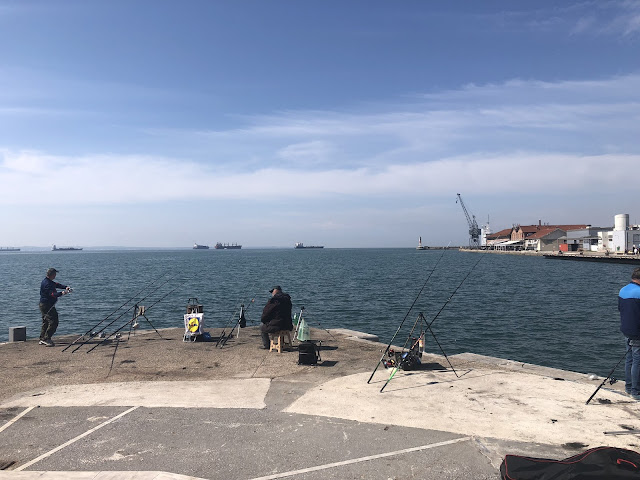Usually, I don’t write this much about the cities I visit, but I think this city deserves much more attention and words. It has left a deep imprint on my memory due to the overwhelming number of impressions it gave me and its unique vibe. The city is called Thessaloniki, also known as Solun or Salonica, depending on the language. Even this variety of names is interesting, showing the city’s significance to many countries and cultures. It has always been important as a hub, a place worthy of being named specifically in different languages. The name Thessaloniki comes from the sister of Alexander the Great, after whom the city was named. As a wedding gift, Alexander gave one of his generals the city because the general married his sister—a romantic and historical tale.
 |
| Alexander the Great Monument |
One of my first impressions upon arriving in Thessaloniki was the sight of antennas and water boilers scattered across the rooftops of buildings. Almost all the buildings are painted in light colors, probably to reflect sunlight and reduce heat, which seems to have become a defining style. Thessaloniki is a city of uniformity, with no houses or skyscrapers—just rows of apartment buildings. Interestingly, many older structures, like churches or ancient buildings, are now below ground level. Over time, as the soil shifted and the city grew, these structures became partially buried.
 |
| View to Olmpic Mountains |
Geographical Location: Thessaloniki is a Mediterranean city but lies further north than most Mediterranean cities, creating a mix of southern and northern influences. This gives it a semi-continental climate, influenced by its proximity to the Balkans. Greeks even have a word, barbáris, to describe the harsh northern winter. Snow in Thessaloniki is rare, but winter temperatures can dip to around zero degrees Celsius. In summer, however, the area becomes a hot tourist spot, especially the nearby Chalkidiki region, one of the most popular summer destinations in Greece and Europe. If you're flying into Thessaloniki, you can reach the city via bus 01X, with tickets costing €1.80. The starting point is conveniently located near the airport. If you're traveling by bus, it will drop you off near the train station.
 |
| People just chilling |
History: Thessaloniki’s history is long and complex, capable of encompassing the history of ten countries in one city. It was a major city during the Roman, Greek, and Ottoman eras. Because of this, its population has shifted frequently and unpredictably, with events like population exchanges and the deportation of the Jewish community leaving lasting marks on its identity.
The region surrounding Thessaloniki is famous for its connection to Aristotle and Alexander the Great. Their legacy is still present in the city, reflected in its street names and landmarks, such as Aristotle Square and Aristotle University—the largest university in the Balkans.
Thessaloniki also has a distinct Balkan feel. You can hear cars driving around with loudspeakers, announcing the collection of old appliances or other items. It’s common to see vendors selling fresh fruits and vegetables directly from the backs of their vehicles, adding to the city's lively streets.
Ataturk was born here, and there is birh museum of him, and it's connected now to Turkish consulate, ticket is free and you can go there almost every day. It's easy to go by walking.
 |
| Kemal Ataturk birth house |
The port of Thessaloniki has played an essential role throughout its history and remains significant today. It connects to other Greek islands, and many cruises stop by the city each week.
Museums and Sites: If you plan to visit Thessaloniki, don’t miss its museums. I highly recommend the Archaeological Museum and the Church of Saints Cyril and Methodius. These two figures were instrumental in shaping the written language for all Slavic people.
Thessaloniki is also known as a "Bible city." The Apostle Paul visited Thessaloniki, preaching on its city walls before being chased away. Some of these ancient walls are still visible in the upper part of the city, although the sea-facing walls have been destroyed. Also, from Thessaloniki it is possible to see Olympus Mountains.
Thessaloniki never sleeps. You can always find something open, whether it’s a place to grab a drink or just enjoy the city’s vibrant nightlife. The energy of Thessaloniki is contagious.
Lastly, I recommend checking out the cruise ship Arabella, which doubles as a floating museum. Don’t forget to browse through some pictures and enjoy the city's unique charm! Also, you can visit Halkidiki from here.
 |
| Thank you for reading, here is also picture from the Thessaloniki cat as award |